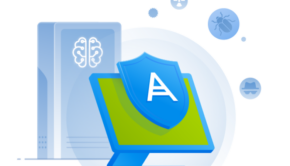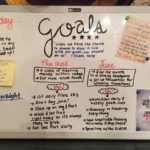How Top B2C Brands Embrace Product-Led Growth
Product-led growth is the new buzzword in the technology industry, and there are several reasons why it has garnered much attention. PLG is a business strategy where the product is the main driver of the business, and the focus is placed on it. Customer acquisition, retention, and expansion all revolve around the product, and the end-user product experience is also given much attention.
Both B2B as well as B2C companies are now embracing product-led growth strategies. Initially, these brands relied on sales and marketing-led growth. But after discovering the ample amount of benefits of PLG in a business, companies are slowly switching over. So, before we take a look at how B2C brands and companies are embracing product-led growth strategy, let us first evaluate its benefits. They are as follows.

Why B2C Brands Are Embracing The Product-Led Growth Strategy
Faster And More Efficient Growth
Companies like Slack, Calendly, and Dropbox have helped make remote work easier giving its users access to basic functions for free. By doing this, the company creates a pipeline of active or potential users and later converts them into paying customers. This way, the companies grow faster and more efficiently and encourage users to distribute the product through positive word-of-mouth.
A Wide Reach
With the freemium model that comes with a product-led growth strategy, you can have a much wider reach to your audience. Since it is primarily free, more people are open to its use, helping you and your product get a wider reach.
Lowers Customer Acquisition Costs
More and more B2C companies are adopting this strategy as it is cost-effective. Not only do product-led plans target more qualified leads, but the existing customers are already interested in your product. But it also drastically reduces marketing costs as publicity is done through verbal referrals.
Examples Of How Top B2C Brands Using Product-Led Growth
Now that we’ve seen why B2C brands are embracing product-led growth strategies, let’s look at how they are using this business strategy effectively.
Calendly
This is Saas company that is both B2B and B2C and uses product-led growth as a strategy. Calendly is an automated scheduling tool that helps people schedule their events and meetings. It has effectively used PLG in its business strategy as it focuses primarily on its product. And what makes it grow effectively is its virility. Since it cannot exist with a single user scheduling meetings, the company grows by itself as the user sends the link to another user and is part of a joint event.
Slack
Initially, Slack started as a B2C or small B2B model. Unlike Calendly, which uses variety to embrace product-led growth, Slack uses the network effect. Instead of bringing users outside of their teams and organizations together, Slack allows users to reach everyone in the same organization under one roof. So if a single user adopts Slack in a company, the product is quickly adapted by others in the organization.
DocuSign
As the name suggests, DocuSign ensures employees can securely send, sign and manage documents sitting almost anywhere in the world. Its main USP is that it has smooth onboarding, where a user can open a free account and can receive an e-signature from a user with no account. The freemium model has enabled this company to grow faster and reach a wider audience.
Tips Your B2C Company Can Use If You Plan To Switch To A Product-Led Growth Strategy
Design A Product That Delivers Value
Because PLG strategy is driven by the product itself, a product that meets the user’s expectations is essential. Not only should the product provide a hassle-free user experience, but it must also be feature-laden so the users are satisfied with it. Also, if you personalize your product to the individual level, that too could be beneficial to your user.
Ensure Seamless Onboarding
If your product adopts a complicated onboarding process, users will refrain from using it. Hence, B2C companies should keep in mind that the initial process of use must be seamless as they will not hesitate to abandon your product. Apart from this, companies could also offer different pricing models such as free trials and freemiums to attract customers. This allows them to explore the product without entirely purchasing it.
Prompts
It’s not enough to just have free existing and active customers. Companies must also focus on converting them into paid users. For this, they need to prompt users at the right times, so they can get the paid version of the software. One company that does a great job at this is Spotify, as the app prompts users to upgrade to a premium account after listening to a set number of songs.
Use Behavioral Analytics To Measure And Grow
Finally, a company can only thrive using the PLG strategy if they are constantly reinventing itself. Companies can make data-driven decisions based on user behavior and this could lead to exponential growth.
Well, we hope that our comprehensive guide gave you a sneak peek into how top B2C brands are embracing product-led growth and why.
















